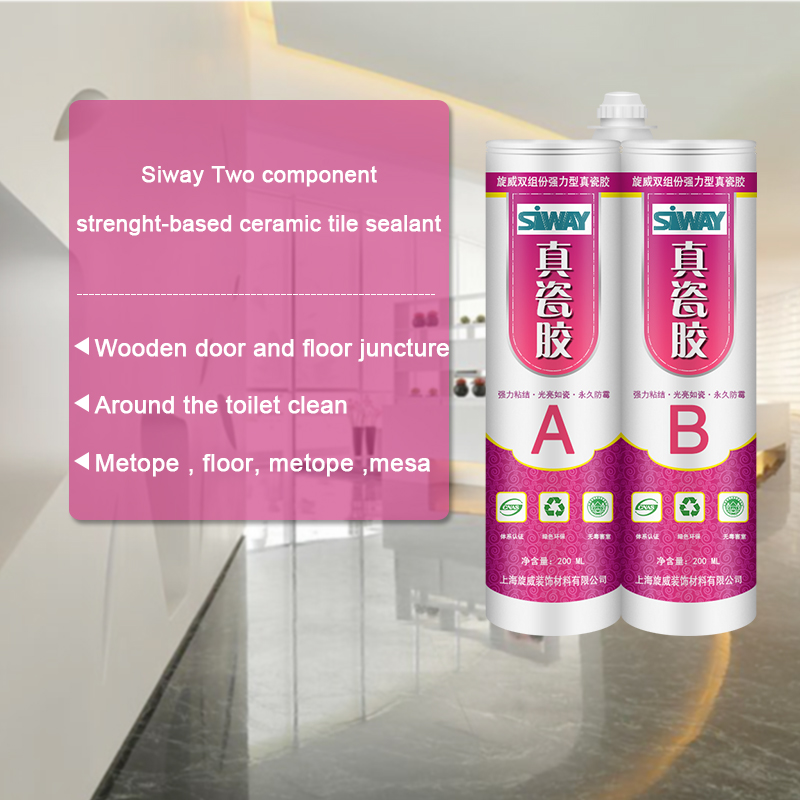Trending Products SV-999 Structural Glazing Silicone Sealant for Houston Factories
Short Description:
Description SV – 999 silicone structural sealant is a one-component, neutral curing, designed for glass curtain wall, aluminum curtain wall, glass daylighting roof and metal structural engineering structural assembly silicone sealant. Show the effective physical properties and bonding performance Key Features 1. 100% silicone 2. No sag 3. Strong bonding strength 4. Water & weatherproof 5. Primerless adhesion to most building materials 6. 25% movement capability Basic Application...
It is a good way to improve our products and service. Our mission is to develop creative products to customers with a good experience for Trending Products SV-999 Structural Glazing Silicone Sealant for Houston Factories, We are glad that we are steadily growing with the active and long term support of our satisfied customers !
Description
SV – 999 silicone structural sealant is a one-component, neutral curing, designed for glass curtain wall, aluminum curtain wall, glass daylighting roof and metal structural engineering structural assembly silicone sealant. Show the effective physical properties and bonding performance
Key Features
1. 100% silicone
2. No sag
3. Strong bonding strength
4. Water & weatherproof
5. Primerless adhesion to most building materials
6. 25% movement capability
Basic Application
1.Glass curtain wall, aluminum curtain wall structure adhesive seal
2.Glass daylighting roof, metal structure engineering
3.Insulating glass bonding
Technical data sheet
| Test standard | Test project | Unit | value |
| Before curing——25℃,50%R.H. | |||
| specific gravity | g/ml | 1.40 | |
| GB13477 | Flow, sagging or vertical flow | mm | 0 |
| GB13477 | Operating time | min | 15 |
| GB13477 | surface drying time(25℃,50%R.H.) | min | 40-60 |
| Sealant curing speed and operating time will have different with different temperatures and temperature, high temperature and high humidity can make sealant curing speed faster, rather low temperature and low humidity are slower.21 days after curing——25℃,50%R.H. | |||
| GB13477 | Durometer Hardness | Shore A | 40 |
| The ultimate tensile strength | Mpa | 1.3 | |
| GB13477 | Tensile strength(23℃) | Mpa | 0.8 |
| GB13477 | Tensile strength(90℃) | Mpa | 0.5 |
| GB13477 | Tensile strength(-30℃) | Mpa | 0.9 |
| GB13477 | Tensile strength(flooding) | Mpa | 0.6 |
| GB13477 | Tensile strength(flooding – ultraviolet) | Mpa | 0.6 |
Certification
GB 16776;ASTM C1184
Color
Black
Package
300ml in cartridge * 24 per box, 500ml in sausage *20 per box
Shelf life
12 months
Note
If you want the TDS or MSDS or other details, please contact with our sales person.
In this video we make a desiccator bag for thoroughly drying hygroscopic chemicals. Some chemicals are hygroscopic, meaning they absorb water from the air and become moist, mushy, or even liquefy. For highly accurate work and good results in experiments the chemicals should be dried before use. A laboratory device for doing this is called a desiccator.
Laboratory desiccators use vacuum and drying agents. A simple home desiccator can be made from an airtight resealable plastic bag and a hygroscopic drying agent like sodium hydroxide.
Simply get a plastic container and fill it up with sodium hydroxide, then place it inside the bag along with a container of the chemical you intend to dry. Seal it up and wait.
Thorough drying can take weeks. Sometimes you might run into the problem where the top dries before the bottom, you’ll have to grind your chemical every so often to continue drying.
The bag is also good for storing already dry chemicals to keep them dry. After using a chemical, return the unused portion to the bag to dry out the tiny bit of humidity it absorbed while you were working it.
Other drying agents you can use are:
Potassium hydroxide
calcium chloride
silica gel
sodium sulfate
magnesium sulfate
calcium sulfate
molecular sieves
sulfuric acid
I don’t use glass because the agents might dissolve glass. Plastic container are cheap and disposable.
This desiccator only works on solids, it does not work on liquids and cannot be used for concentrating acids, peroxide or drying alcohols.


